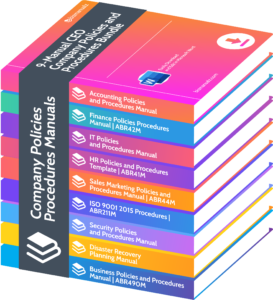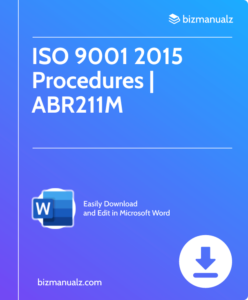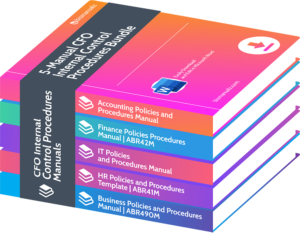What Compliance Standards Require Policies and Procedures?

Numerous compliance standards across various industries require organizations to establish and maintain comprehensive policies and procedures. The specific standards applicable to a business depend on its industry, geographic location, and the nature of its operations. what compliance standards require policies and procedures?
What are Compliance Policies & Procedures?
Compliance Policies and Procedures are a foundation for Ethical and Legal Business Practices. They are a set of documented guidelines that organizations establish and implement to ensure that their operations align with applicable laws, regulations, industry standards, and internal ethical standards.
These documents serve as a framework for employees to understand, follow, and enforce rules and regulations governing the organization’s activities. Let’s delve into the components and significance of compliance policies and procedures:
1. Definition and Purpose of Compliance Policies & Procedures
- Compliance Policies: Broad guidelines that articulate the organization’s commitment to complying with relevant laws, regulations, and ethical standards.
- Compliance Procedures: Specific, step-by-step instructions on how employees should carry out tasks in alignment with compliance policies.
2. Key Components of Compliance
- Code of Conduct: Outlines expected ethical behavior and standards of conduct for employees.
- Legal and Regulatory Guidelines: Details laws and regulations relevant to the industry and business operations.
- Risk Management Protocols: Identifies potential risks and establishes procedures for risk mitigation and compliance monitoring.
- Reporting Mechanisms: Establishes channels for employees to report violations or seek guidance on compliance matters.
- Training Programs: Ensures that employees are educated about compliance policies and procedures.
3. Importance of Compliance
- Legal Compliance: Helps avoid legal repercussions and fines by ensuring adherence to relevant laws and regulations.
- Ethical Standards: Establishes a culture of integrity, promoting ethical behavior and decision-making.
- Risk Mitigation: Identifies and mitigates potential risks associated with non-compliance.
- Reputation Management: Safeguards the organization’s reputation by demonstrating a commitment to ethical and lawful conduct.
4. Development and Implementation of Policies & Procedures
- Legal Review: Involves legal experts to ensure policies align with current laws and regulations.
- Customization: Tailors policies to the organization’s specific industry, size, and operations.
- Employee Input: Encourages input from employees to ensure practicality and relevance.
5. Periodic Review and Updates
- Regular Audits: Conducts periodic audits to ensure ongoing compliance and identifies areas for improvement.
- Updates: Revises policies and procedures to reflect changes in laws, regulations, and organizational processes.
6. Examples of Compliance Policies
- Anti-Bribery and Corruption Policy: Outlines rules to prevent bribery and corrupt practices.
- Data Protection and Privacy Policy: Ensures compliance with data protection laws.
- Conflict of Interest Policy: Guides employees on disclosing and managing potential conflicts of interest.
- Whistleblower Policy: Provides protection and procedures for employees reporting unethical conduct.
7. Communication and Training
- Communication Plan: Clearly communicates policies to all employees, stakeholders, and relevant third parties.
- Training Programs: Offers regular training to ensure that employees understand and can apply compliance policies and procedures.
8. Compliance Enforcement and Consequences
- Disciplinary Measures: Clearly outlines consequences for non-compliance, emphasizing fair and consistent enforcement.
- Protection for Whistleblowers: Ensures protection for employees reporting violations in good faith.
9. Integration with Company Culture
- Leadership Example: Demonstrates commitment to compliance from top leadership.
- Incorporation into Values: Embeds compliance into the organization’s core values and mission.
10. Adaptability to Change
- Agility: Allows for quick adaptation to changes in laws, regulations, and industry standards.
- Continuous Improvement: Encourages a culture of continuous improvement in compliance practices.
Notable Compliance Standards Requiring Policies and Procedures
It’s important for organizations to conduct a thorough assessment of the applicable compliance standards in their industry and region to identify specific requirements for policies and procedures. Developing and maintaining comprehensive and well-documented policies and procedures is not only a regulatory requirement but also contributes to effective risk management, operational efficiency, and overall organizational resilience.
Some notable compliance standards that commonly mandate the development and implementation of policies and procedures are listed below:
ISO Standards
- ISO 9001 (Quality Management System): Requires documented quality management system procedures.
- ISO 27001 (Information Security): Requires a set of policies and procedures for managing information security risks.
- ISO 14001 (Environmental Management System): Requires organizations to develop policies and procedures for managing environmental aspects and impacts as part of their commitment to environmental sustainability.
- ISO 13485 (Medical Device): Requires documented system of Safety Policies and procedures to protect the user or public.
HIPAA (Health Insurance Portability and Accountability Act)
Healthcare organizations in the United States dealing with protected health information (PHI) must have policies and procedures to safeguard patient data.
PCI DSS (Payment Card Industry Data Security Standard)
Organizations handling credit card transactions must establish and maintain security policies and procedures to protect cardholder data.
GDPR (General Data Protection Regulation):
Applies to organizations processing personal data of individuals in the European Union. Requires policies and procedures for data protection and privacy.
Sarbanes-Oxley Act (SOX)
Public companies in the United States must comply with SOX, which mandates internal controls and documentation of financial processes.
FERPA (Family Educational Rights and Privacy Act)
Educational institutions in the U.S. must comply with FERPA, which requires policies and procedures to protect the privacy of student records.
OSHA (Occupational Safety and Health Administration)
Requires businesses to develop and implement safety policies and procedures to ensure a safe working environment.
FISMA (Federal Information Security Management Act)
Requires federal agencies in the U.S. to develop and maintain information security policies and procedures.
AML (Anti-Money Laundering) Regulations
Financial institutions must establish and maintain policies and procedures to prevent money laundering activities.
Ethics and Compliance Standards
Many industries and regions have specific ethical and compliance standards (e.g., industry codes of conduct, anti-corruption policies) that necessitate the development of related policies and procedures.
- Environmental Compliance: Organizations operating in environmentally sensitive industries must adhere to regulations that often require policies and procedures for environmental management.
- Accessibility Standards: Organizations may need policies and procedures to ensure compliance with accessibility standards, such as the Americans with Disabilities Act (ADA) for websites and digital content.
Compliance Standards Mandating Policies and Procedures
There are numerous other compliance standards across various industries that require organizations to establish and adhere to specific policies and procedures. The regulatory landscape is dynamic, and new standards may emerge. Here are additional compliance standards that often mandate the development of policies and procedures:
COSO (Committee of Sponsoring Organizations of the Treadway Commission)
COSO provides an internal control framework widely used to design, implement, and assess internal control and enterprise risk management. Organizations often develop policies and procedures based on COSO principles.
NIST Framework (National Institute of Standards and Technology)
The NIST Cybersecurity Framework provides guidelines for managing and improving an organization’s cybersecurity risk. It recommends the development of policies and procedures to enhance cybersecurity.
COBIT (Control Objectives for Information and Related Technologies)
COBIT is a framework for the governance and management of enterprise IT. It emphasizes the need for policies and procedures to ensure effective IT governance.
ITIL (Information Technology Infrastructure Library)
ITIL is a set of practices for IT service management. Organizations often develop policies and procedures aligned with ITIL principles to enhance IT service delivery.
FDA Regulations
Organizations in the pharmaceutical and healthcare industries must comply with FDA regulations, which often require detailed policies and procedures for quality management, safety, and compliance.
DOT Regulations (Department of Transportation)
Entities involved in transportation, especially those dealing with hazardous materials, must adhere to DOT regulations that mandate specific policies and procedures for safety and compliance.
NFPA Standards (National Fire Protection Association)
Industries dealing with fire safety often follow NFPA standards, which may require the development of policies and procedures for fire prevention, protection, and emergency response.
GMP (Good Manufacturing Practice)
Industries involved in manufacturing, especially in pharmaceuticals and food, must adhere to GMP regulations that often necessitate the implementation of detailed policies and procedures for quality control and safety.
SEDAR (System for Electronic Document Analysis and Retrieval)
Companies listed on Canadian stock exchanges are required to file regulatory documents through SEDAR, which may involve the development of policies and procedures for accurate and timely reporting.
NBA (Notifiable Data Breaches) Scheme
In Australia, the NBA Scheme mandates entities to have policies and procedures in place for handling data breaches involving personal information.
This list is not exhaustive, and the specific compliance standards applicable to an organization depend on its industry, geographical location, and the nature of its operations. Regularly monitoring regulatory changes and updates is crucial for staying compliant and ensuring that policies and procedures remain aligned with evolving requirements.
Compliance policies and procedures
Compliance policies and procedures are foundational documents that guide organizations in operating ethically, legally, and in accordance with industry standards. They play a crucial role in shaping organizational culture, mitigating risks, and safeguarding the reputation and sustainability of the business. Regular review, communication, and training ensure that these documents remain relevant and effective in a dynamic business environment.



















Leave a Reply